Where Do Spiders Like to Hide? A Locals’ Guide to Sneaky Spider Spots (and What to Do About Them)
Where Do Spiders Like to Hide? A Locals’ Guide to Sneaky Spider Spots (and What to Do About Them)
Summary: Learn the real places spiders hide indoors and outdoors—and how to make each spot less attractive—plus when to call Green for professional spider control.
Spiders are part of life in the Mid-Atlantic—but that doesn’t mean you want them surprising you in the shower or dropping from the eaves. If you’ve ever wondered “where do spiders hide,” the short answer is: anywhere that’s still, undisturbed, and close to prey. The longer answer (and the practical fixes) are below.
This guide explains the most common indoor and outdoor hideouts, why those spots attract spiders in the first place, and the simple steps you can take to make your home less inviting—without turning it into a construction zone.
Why Spiders Pick Certain Spots
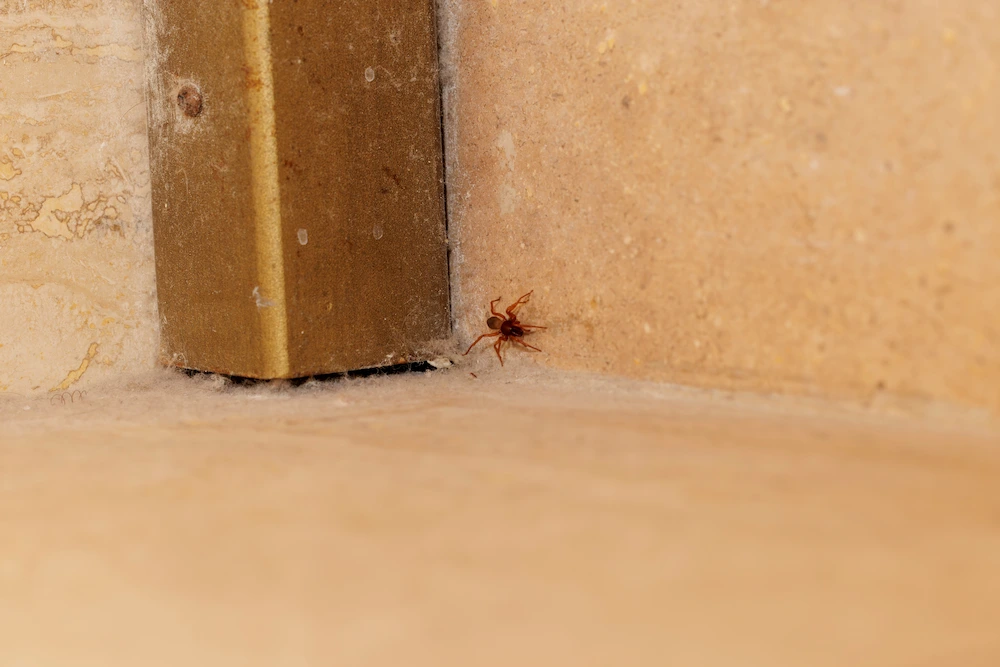
Spiders follow food, shelter, and moisture. They prefer tight, low-traffic pockets where air barely moves and insects are plentiful. Many species are nocturnal and avoid open daylight. That’s why you’ll find webs tucked high in corners, sacs behind boxes, and hunters cruising baseboards when the lights go out. Understanding the “why” behind the question “where do spiders hide” helps you remove what’s attracting them—and keep them out for good.
Where Do Spiders Hide Indoors?
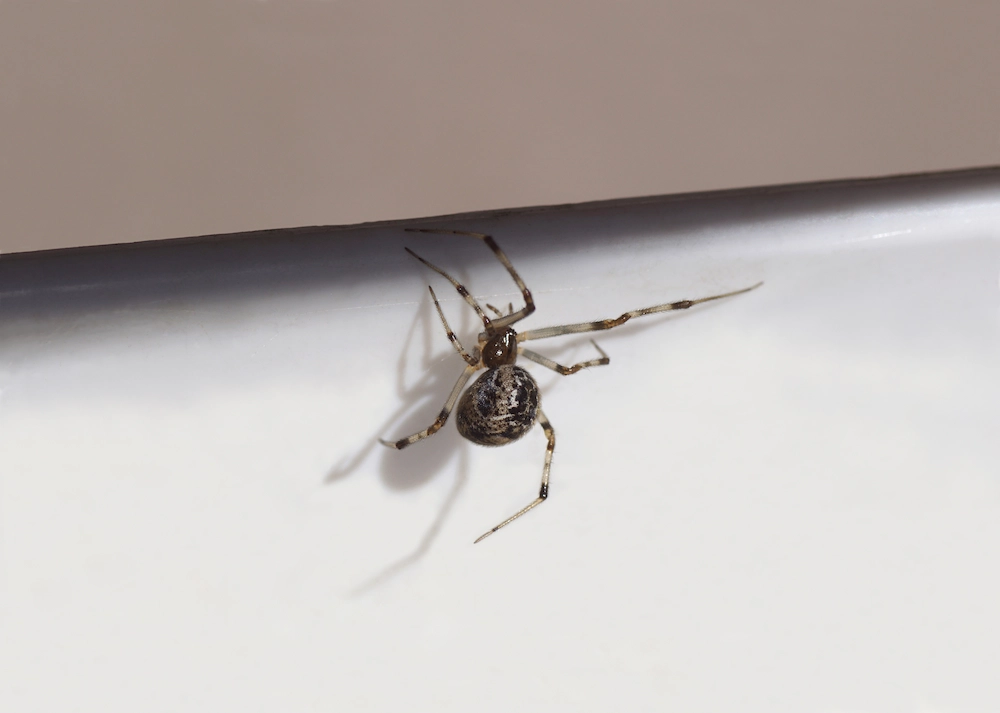
If you’re seeing spiders inside, you’re usually seeing just a few ambassadors from a much larger parade that stays hidden during the day. Typical indoor hotspots include:
- Upper room edges and ceiling junctions. That’s why you so often notice Spiders in house corners—warm air rises, drafts are weaker, and web strands anchor easily.
- Under large furniture and appliances. Think sofas, beds, washers/dryers, fridges, and storage shelves. These are prime “Spiders under furniture and objects” zones thanks to shade, dust, and insect crumbs.
- Behind boxes in closets, basements, and garages. Cardboard holds scent and humidity and provides lots of tiny gaps for egg sacs.
- Inside window frames, door jambs, and along baseboards. These are quiet ledges with small air leaks that draw insects, a.k.a. free dinner.
- Utility areas. Mechanical rooms, crawlspaces, sump pits, and around water heaters—extra humidity means extra bugs.
Common Spider Hiding Spots Outside
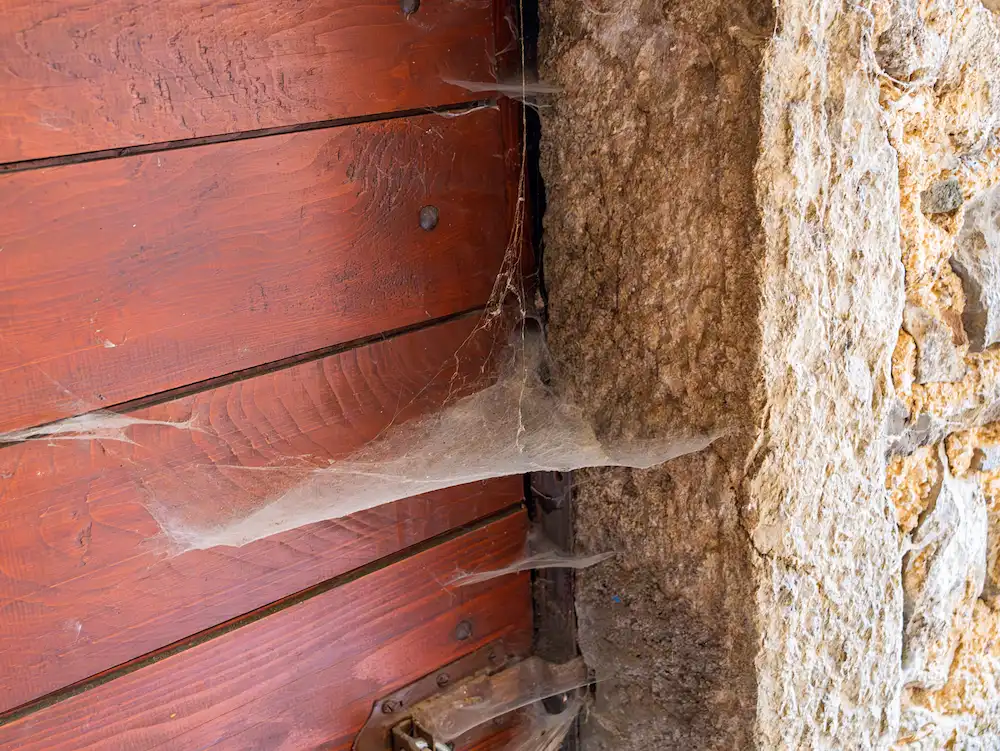
Let’s move on to asking “where do spiders hide” in the great outdoors. Most indoor sightings start outside. If the exterior is spider-friendly, you’ll keep getting “drop-ins.” Watch these outdoor zones:
- Eaves, soffits, and porch lights (light attracts insects, which attracts spiders).
- Stacked firewood, lumber, and yard debris near the house.
- Dense shrubs and ivy hugging siding, plus fence lines and shed interiors.
- Under patio furniture, playsets, grills, and stored seasonal items.
- Gaps where utility lines enter the structure, and weep holes in brick.
Under Objects vs. Web Corners—Different Habits, Same Result
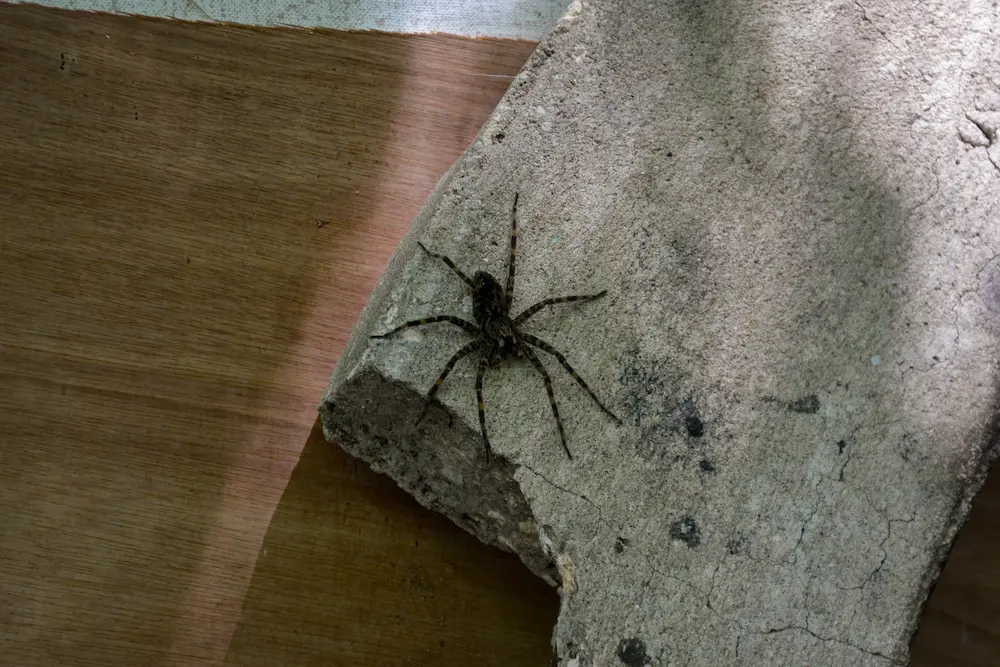
Not every spider builds webs. Web builders anchor where strands won’t be disturbed: corners, high beams, and behind rarely moved items. Ground hunters like wolf spiders and jumping spiders prefer to roam—hiding under objects, along baseboards, and inside clutter. Either way, the more clutter and insects you have, the more spider-friendly your space becomes. Keeping things tidy and well-sealed helps both groups move along. These are Common spider hiding spots homeowners can change with a few simple tweaks.
How to Make Those Spots Less Attractive
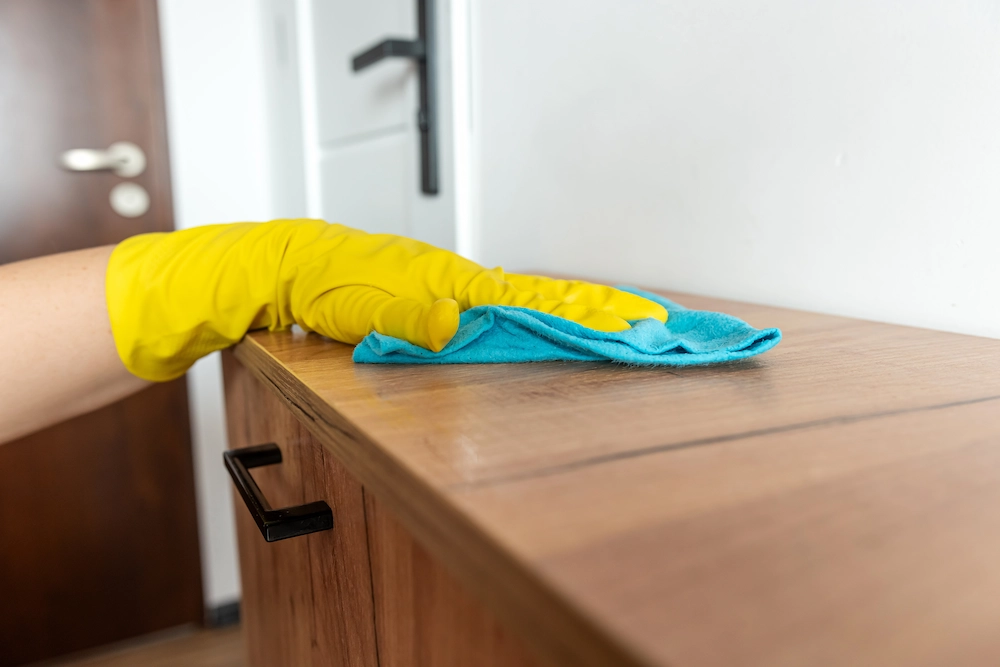
You don’t have to remodel to make progress. Focus on three levers—reduce food, remove shelter, and block entry.
Inside your home
- De-web and dust high corners weekly. Use an extension duster to sweep ceiling edges, light fixtures, and vents. Bag and bin any egg sacs you find.
- Move and vacuum under large items monthly. Hit beds, sofas, and big appliances where crumbs and insects gather.
- Swap cardboard for sealed plastic bins. Cardboard is basically a spider hotel lobby; lidded bins keep things dry and undisturbed.
- Tighten the envelope. Add fresh weather-stripping, fix door sweeps, and caulk gaps around trim, baseboards, and utility penetrations.
- Mind the lights. At night, close shades and use warmer bulbs near entries to attract fewer insects to windows and doors.
Outside your home
- Trim back vegetation 12–18 inches from siding and elevate firewood 20+ feet from the foundation.
- Deweb eaves and soffits; clean porch light housings and switch to bulbs that attract fewer insects.
- Store patio cushions and toys in sealed bins; shake out items before bringing them indoors.
- Seal exterior cracks and gaps; use fine mesh on vents and check that screens fit tightly.
- Manage moisture: fix leaky spigots, clear gutters, and aim downspouts away from the foundation.
When DIY Isn’t Enough
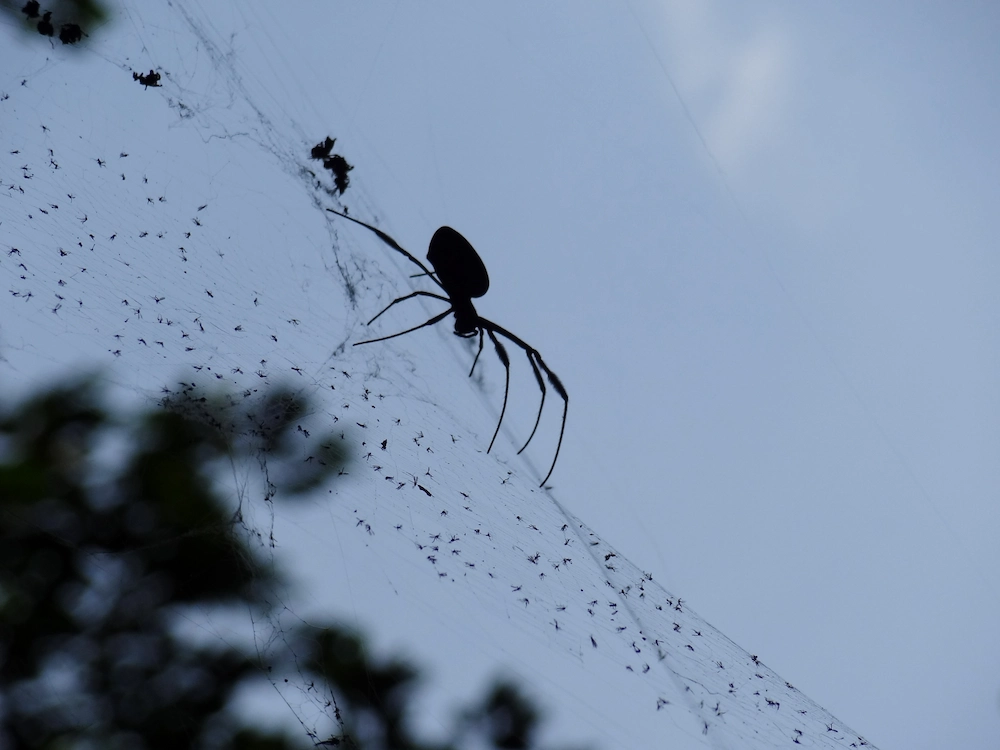
Persistent sightings, several egg sacs, or webs reappearing days after you clean can signal that spiders (and their food sources) are well-established. That’s when targeted, professional treatments make the biggest difference. If you’re in the DMV and surrounding areas, our local technicians can identify hot zones, remove webs up to the roofline, and set up a protective barrier that addresses the spiders you see—and the insects they chase.
For location-specific help, explore our spider control options—like spider control in Bethesda and Arlington spider control—and we’ll get you scheduled on a convenient route. We combine dewebbing, precision dusting in eaves and peaks, and strategic treatments that are safe for your family and pets while making your home a no-spider zone.
Quick FAQ
Where do the “mystery” spiders in the shower come from?
Often from exhaust fans, ceiling corners, or gaps around plumbing where humidity draws insects. De-web, improve ventilation, and add a tight door sweep to reduce visitors.
Are most house spiders dangerous?
In our area, most are nuisance species. Bites are uncommon and usually mild. Still, avoid handling spiders and call us if you’re worried about identification or venom risk.
Will removing webs actually help?
Yes. It eliminates egg sacs, disrupts anchor points, and removes food caches that keep spiders coming back to the same spots.
The Bottom Line
Spiders set up shop anywhere that’s quietly offering food and cover, so asking “where do spiders hide” opens a lot of doors. Tidy corners, sealed gaps, and consistent de-webbing go a long way—but pairing that with routine professional service is what keeps your space reliably spider-free season after season.
Citations
Serrano, N.G.B. (2025, May 23). 5 hidden places spiders love to nest in your home — and how to keep them out. The Spruce. Available at https://www.thespruce.com/where-do-spiders-hide-11739077 (Accessed on October 20, 2025).
Keep Pests Out of Your Holiday Gatherings
Keep Pests Out of Your Holiday Gatherings Keep Pests Out of Your Holiday Gatherings Summary: The holiday season is all about good food [...]
Cold Weather vs. Warm Weather Infestations: How Temperature Shapes Pest Activity
Cold Weather vs. Warm Weather Infestations: How Temperature Shapes Pest Activity Cold Weather vs. Warm Weather Infestations: How Temperature Shapes Pest Activity Summary: [...]
Garden Pests Do Not Hibernate Indoors – How They Attack Houseplants And What To Do
Garden Pests Do Not Hibernate Indoors – How They Attack Houseplants And What To Do Garden Pests Do Not Hibernate Indoors – How They Attack [...]
The Scariest Pests (And Why They Freak Us Out)
The Scariest Pests (And Why They Freak Us Out) The Scariest Pests (And Why They Freak Us Out) Summary: A practical, homeowner-friendly guide [...]
Favorite Foods of Rats and Mice
Favorite Foods of Rats and Mice Favorite Foods of Rats and Mice Summary: Rats and mice are surprisingly picky about what they eat—especially [...]
Where Do Spiders Like to Hide? A Locals’ Guide to Sneaky Spider Spots (and What to Do About Them)
Where Do Spiders Like to Hide? A Locals’ Guide to Sneaky Spider Spots (and What to Do About Them) Where Do Spiders Like to Hide? [...]

